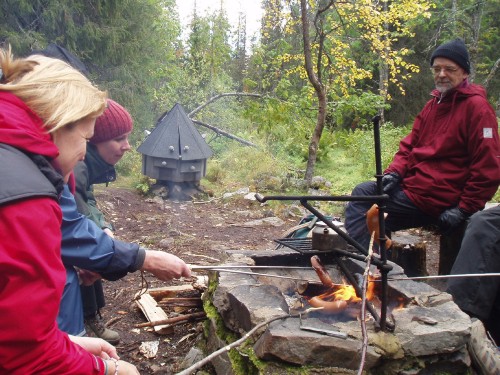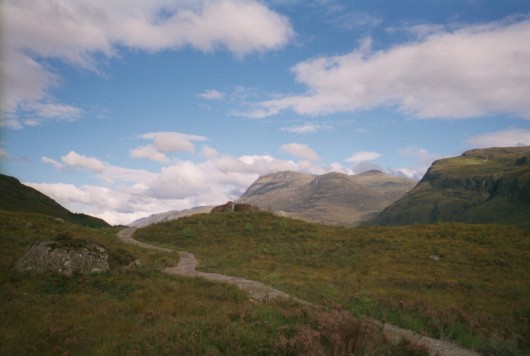1 Introduction
The places associated with outdoor recreation have always included forests, the coast, lakes and rivers, mountains and other spectacular scenery that is nowadays frequently designated as national park or similarly protected. Recreation activities range from the very passive, such as sitting relaxing or enjoying a view to the very active, such as skiing, mountain biking or horse riding. They include the solitary, such as a person going for a walk by themselves or the gregarious, such as a large family picnic or a group of friends going on a hike. Outdoor recreation has a history going back many centuries, from when it was mainly the preserve of social elites who engaged in hunting, for example, through the development of the urban middle classes who visited the seaside and mountainous areas using the developing railway network to the modern car-borne mass recreation to many different destinations of today (Bell, 1997*).In the U.S.A., the national park movement of the 19th century saw many areas of dramatic mountain and other scenery protected as National Parks or National Monuments and these became heavily visited during the early part of the 20th century. Early infrastructure was developed by the Civilian Conservation Corps of the New Deal under the 1930s depression era legislation in the U.S.A. Post Second World War demand for recreation reached new peaks prompting the creation of a programme known as “Mission 66” which saw the development of the kind of recreation infrastructure now common around the world – car parking, trails, visitor centres, interpretative facilities and so on (Carr, 2006). In many countries outdoor recreation is focused on these places as well as more local parks or areas that are accessible on a more everyday basis. The development of recreation in other developed countries partly followed this route but with national and cultural differences. In Scandinavia, the tradition of access made possible by “everyman’s right” has led to much more of the countryside being available for access than in the U.S.A., which has strong private property rights (Aasetre and Vistad, 2006). In the U.K., new legislation has opened more private land to access for recreation (Dales, 2004). These represent typical differences in accessibility to land for recreational purposes.
Terminology related to outdoor recreation and tourism is somewhat unclear. In this paper the distinction between outdoor recreation and nature tourism is as follows:
Outdoor recreation refers to activities that people undertake out of doors in places where they can access nature or green areas, mainly as part of their daily or weekend routines. Nature tourism is a term that covers activities that people enjoy while on holiday and which focus on engagement with nature and usually includes an overnight stay (Silvennoinen and Tyrväinen, 2001*). Typically this means travelling to and staying overnight in locations close to or in national parks, forests, lakes, the sea or the countryside and participating in activities using these settings and compatible with their natural qualities. Another related term that is found in the literature or in common use is Ecotourism which, while connected with nature tourism (TIES, 1991*), focuses rather more on travel to rural and peripheral areas of developed countries and, increasingly, to developing countries where experiencing local cultures and undertaking wilderness adventures goes hand-in-hand with benefits to the tourist such as personal growth, benefits to the area visited through volunteering, and through education by learning new ways to live on the planet. It involves travel to places where the flora, fauna, and cultural heritage are the main attractions. Responsible ecotourism aims to minimize the negative effects of traditional tourism on the natural environment. This was emphasized by the UN in 2002 with the “International Year of Ecotourism” (UNEP). Practically speaking, there are rather blurred divisions between the terms used in nature or ecotourism. This large and developing subject less easy to circumscribe than outdoor recreation. Moreover, European citizens travel outside Europe and the trends and drivers that affect their motivation apply to the whole range of recreation and tourism, of which the subjects of this paper are subsets.
As the population of the world becomes more urbanised and as concern, in particular in Europe, about health impacts of modern living, such as lack of exercise, obesity (and associated problems such as diabetes) and mental health problems (such as stress) increase, access to nature and the potential benefits of outdoor recreation has started to climb higher on the policy agenda. This does not only concern the traditional policy areas such as forestry, countryside or park management but, increasingly, the health policy areas. A European Union scientific and technical co-operation project “Cost Action E39: Trees, Forests and Human Health and Well-being”, (2004 to 2008) has produced a series of country reports that describe the current state of policy and practice and the increasing evidence base for the role of green areas in health and well-being. (Jepson, 2005; Korpela and Sarjala, 2005; Sandur et al., 2005).
1.1 Scope of the paper
This review paper examines a number of trends related to recreation and nature tourism, mainly in Europe but also some important world-wide aspects, introduced above and considers some of the conflicts and the research needs raised by these trends. The subject of outdoor recreation and nature tourism is receiving a lot of attention at present in Europe and elsewhere. Another Cost Action “E33: Forest Recreation and Nature Tourism” (2004 to 2008) (Cost Action E33, 2004b) brings together 80 researchers and practitioners from 24 countries, all involved in various aspects of the field. Among the activities are a Europe-wide survey of different aspects of recreation policy, planning, management and design and a series of topic papers aimed at producing common frameworks for various aspects including visitor monitoring.
Outside Europe the most extensive research effort in outdoor recreation is probably being undertaken by the U.S.A., where concern over health and obesity caused by poor diet and lack of exercise is greater than anywhere else (Cordell, 2005*). The traditional providers of recreation have been the Forest Service within the Department of Agriculture and the National Park Service supplemented by individual state park and forestry departments. These government organisations together with universities have undertaken the bulk of research while a lot of work on the ground also comes from or is funded by charitable or not-for-profit organisations.
1.2 Structure of the paper
This review paper provides an wide-ranging overview of the situation, mainly in Europe but also reflects current issues elsewhere, looking at a number of key themes of outdoor recreation and nature tourism that have emerged from the research community and described above.
- Drivers and trends in the demand for outdoor recreation and nature tourism and the likely implications for policy and planning; these arise from society and socio-economic developments and set the scene for the rest of the paper.
- The evidence base for health benefits of outdoor recreation and access to nature; this is a major and increasing concern for policy makers
- Conflicts arising from outdoor recreation and nature tourism and associated sustainable management of resources and environments to overcome these conflicts;
- The research needed in the near future related to each of the above themes to help policy makers, planners and managers to cope with the changing demands.






